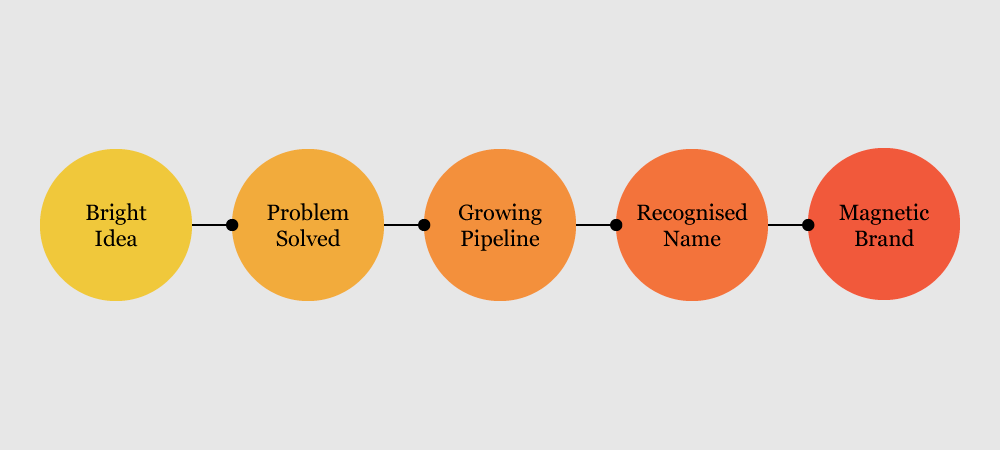Tech Brands: are you struggling to get past pipeline?

And are you leaving money on the table?
We’ve worked with enough tech brands in the past ten years to have spotted a pattern in their lifecycle. It goes something like this:

Seems pretty obvious, right? But if that’s the case, why do so many seem to get stuck around stage three?
If you’re a tech brand owner – or even if you just work closely with the sector – you’ve probably seen this pattern a fair few times. And seen it stall somewhere in the middle more than once. Why?
It’s not a lack of ambition – the tech sector often beats the rest into a pulp on that front. And it’s rarely a lack of knowledge or experience. We’ve lost count of the number of tech companies we’ve met with ambitious, savvy marketing directors who seemed to be getting stuck in spite of themselves.
We’ve realised it’s nothing to do with marketing failures, and everything to do with a quirk of the way that tech brands grow.
The direct response mentality
In the beginning, tech brands need two things more than anything else: funding and sales.
And as the company grows, these needs feed off each other. Creating a marketing approach driven by the need to show direct sales performance.
We call this the ‘direct response’ mentality because it usually nuts out to a strategy driven by direct channels. Emails, mail drops, events, and possibly ultra-targeted digital ads pointing to dry landing pages or old-fashioned, white-papery content (if you’re lucky.)

This approach has two advantages to the young tech company. The first is attributable pipeline. The second is that it seems cheap and prudent in a world where brand and ATL advertising seem ludicrously expensive.
But while it’s good for sales in the short term, it’s very nearly always bad for brand growth and salience in the long term.
Direct response strategies mean people buy from you – but they don’t remember you.
You probably know who JML are, right?
They’re the guys with the talking in store displays. The cheesy ‘buy it now!’ TV ads hawking a range of household products that seem completely superfluous.
They’ve been around forever. And nobody you know takes them seriously. But here’s the thing – people buy that stuff. And lots of it too. The strategy is clearly working for them on a purely cutthroat sales level.
But do you take them seriously as a brand? Probably not. They – and other DR led companies like them – are not household names, despite having a huge household presence.

And yet, they make money.
Why is that relevant? Because in tech land, you’re not selling a non-stick pan or a mop that also does your tax returns.
You’re likely selling an input for a business problem that someone else could easily find another fix for.
And that means there’s always someone newer and shinier just down the line. Someone who could nab a big chunk of your customer base if they don’t have a good reason to stick around.
This is why building a brand rather than just a business is so vital to long-term success.
Stay tuned for the next entry in this series, we’ll tell you why.
Written by Josh Anderson
About markmaking*
markmaking*
mark-making* is an award-winning creative agency specialising in branding, campaigns and communications